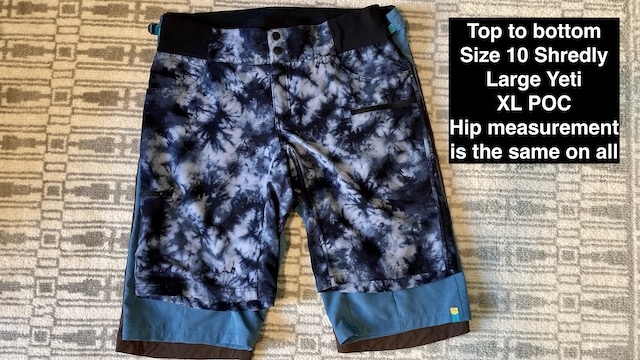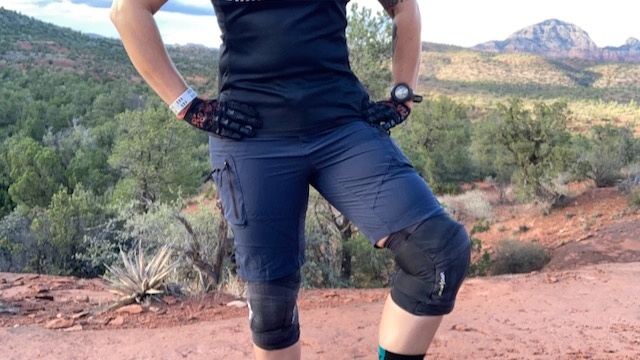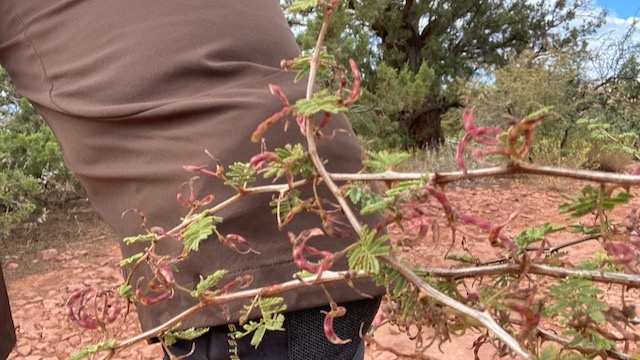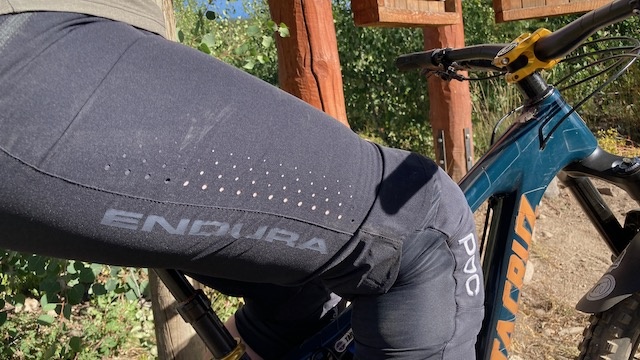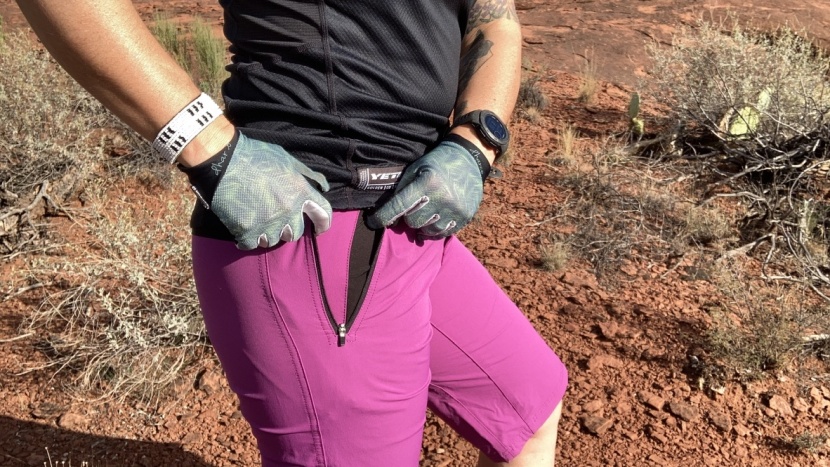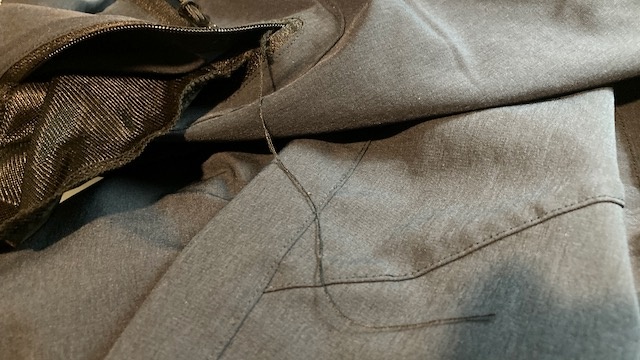Each pair of women's mountain bike shorts in our review undergoes extensive testing in variable weather conditions on a mix of trails, ranging from cross-country to lift-accessed downhill, to evaluate their performance. Our testing process is outlined below to help you better understand our metrics and scoring.
Comfort and Fit
Cut and sizing vary greatly between companies. Therefore, we use each company's size guide to evaluate the fit of their shorts. Using a tailor's tape, we measure each pair of shorts' waist, hips, thigh, inseam, and leg opening and compare our measurements to those listed on the company's website. Where differences exist, we take note. We purchase our test shorts based on our body measurements and then try on each pair of shorts and move in them to get a sense of their general comfort and any areas where they are tight or loose (hips, waist, inseam, rise). We also wear each pair with a chamois to see if it affects the fit of the shorts. We walked around in the shorts, bent over, did some squats, and ran errands, noting where they were comfortable and where they rubbed, bunched up, and so on. We also thought about different body shapes, what body types the shorts fit best, and whether the company offers inclusive sizing.
Pedal Friendliness
Do the shorts ride up on our legs when pedaling? Do they stay up on our hips or gap in the back and creep down? Do pads, or lack thereof, affect how the shorts fit? What about a chamois? Does wearing a chamois add too much extra bulk for comfort, or does a chamois enhance the short's fit? These are all components of our pedal friendliness metric. We wear each pair of shorts on short and long, multi-hour rides to see if anything changes throughout the ride. If the shorts bunch up, bind, or snag on the nose of the saddle, we take note. As we vary our riding stance, we take note of whether the shorts move with our body or if they constrain us. We also ride with and without pads to see if pads affect how the shorts fit.
Protection
The protection metric is related to the length of the inseam, the leg opening size, the durability of the fabric, and whether it has a UPF rating or DWR coating. Terrain and riding style will typically dictate how durable you want your shorts to be, but even if a rider opts for lightweight shorts, we look at protection from the sun and trailside vegetation. Longer inseams offer greater protection and generally work well with kneepads, while shorter ones allow more airflow to the thighs but generally leave a gap between our knee pads and the hem of the shorts. Most fabrics offer some sun protection, but we note those with a listed UPF rating. We also assess the fabric's abrasion resistance by examining it after each ride and intentionally brushing up against trailside vegetation.
Breathability
We measure airflow, moisture retention, and venting (if present) for this metric. These are the aspects that affect how breathable a pair of shorts are. While riding, we note if we can feel air moving through the short's fabric or vents. Some shorts have thick fabrics that breathe poorly and feel hot while riding, while others are incredibly airy. Frequently, we work up a sweat while riding, allowing us to determine how much moisture is retained as we ride and when we're done. We also note how long it takes the fabrics to dry out once we're done riding, paying attention to the upper thighs where shorts can retain moisture.
Features
Pockets, waist adjusters, and pass clips are all features that can be nice to have. Many riders like to have a pocket to stash their phone or lip balm in, but not all. Some riders prefer not to carry a pack, so lots of pockets are desirable. For this metric, we evaluate pockets and zippers, their usefulness, size, and ease of use with gloves on. We measured each pocket to give a sense of what it can hold and how easy it is actually to use. We evaluate each pocket's placement and if having items in it interferes with pedaling or is in an uncomfortable location. We also make sure to use each zipper with our gloves on to see how easily we can pull them open and close.
Construction Quality
We carefully examined each pair of shorts and their stitching for this metric, noting how well they are constructed. Are there missing stitches or loose threads? Are the ends of threads neatly cut off, or do they hang long? Long threads can be pulled and cause seams to unravel, and too many missing stitches can form a hole. We looked for areas of wear in the shorts, paying attention to seams, closures, such as zippers and snaps, and high-wear areas, including the seat and inner thighs. We examine the seams to see if the stitches are coming undone and the fabric for holes, runs, or snags both during and after our testing process.
Conclusion
Using these metrics, we aimed to test the most popular and top-rated ladies' mountain bike shorts and present our findings to you.


